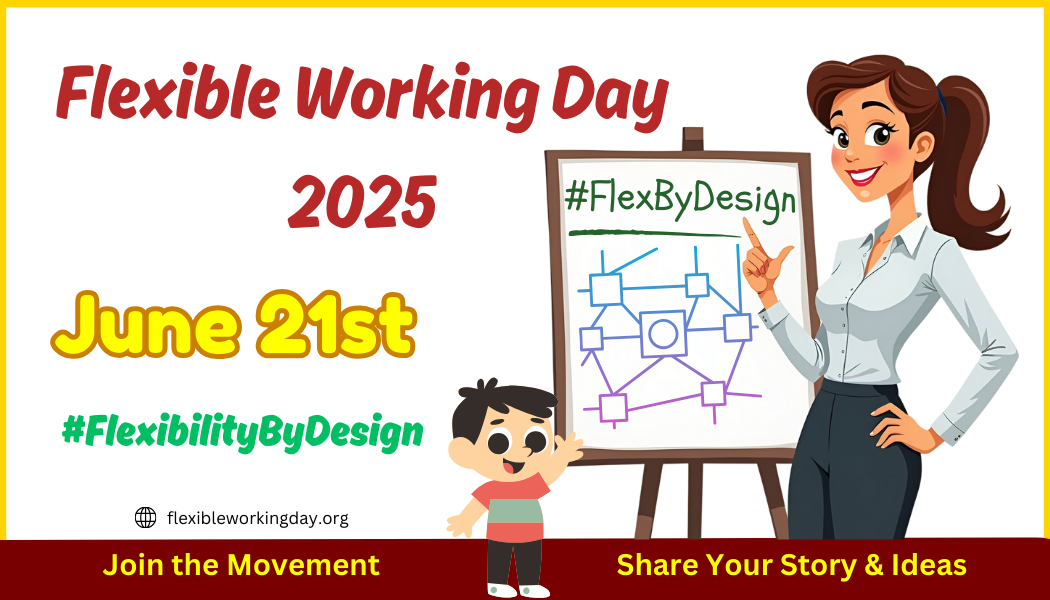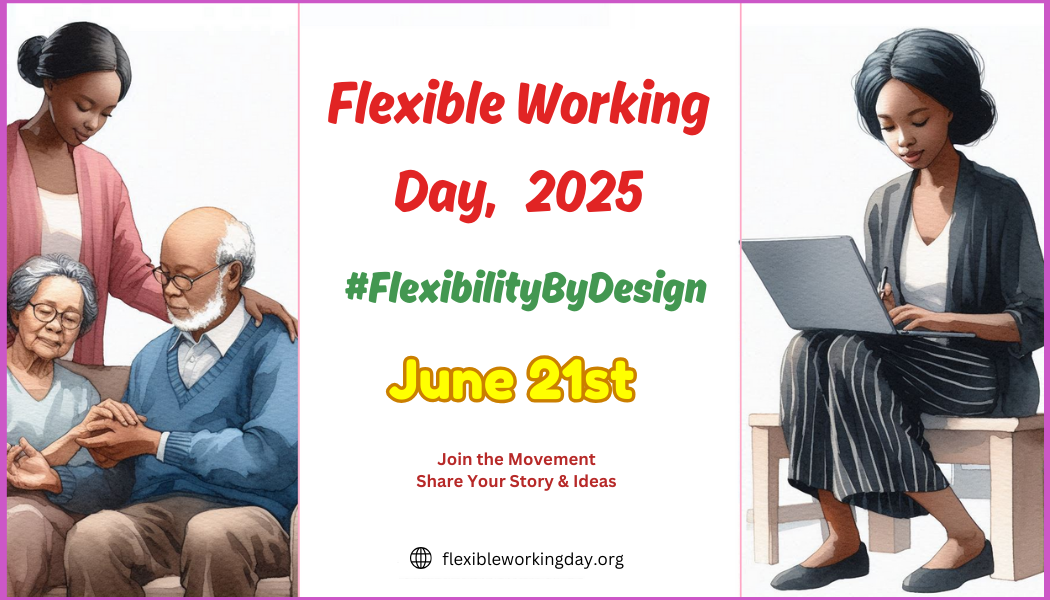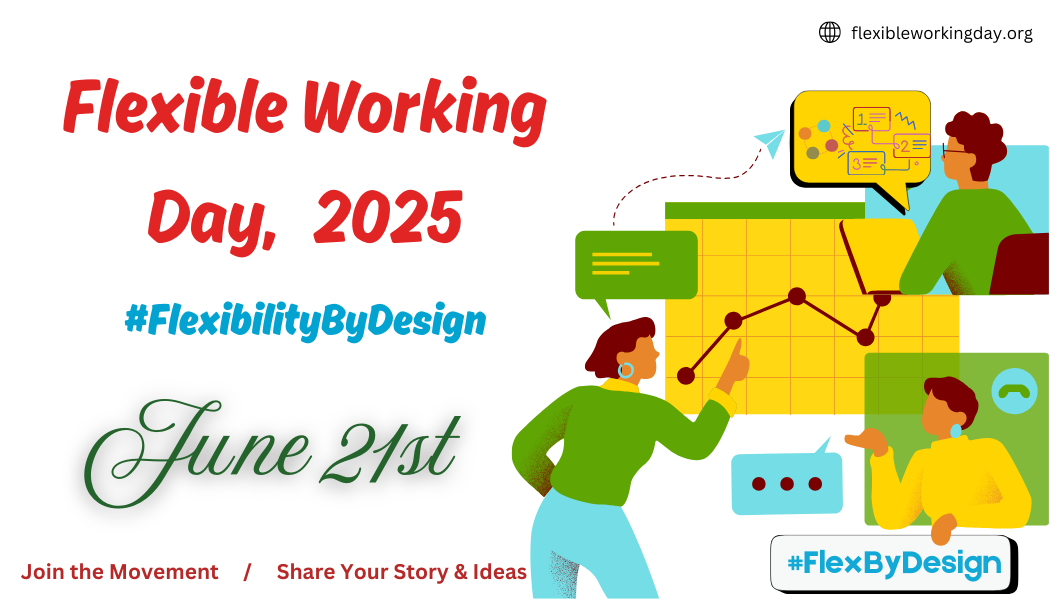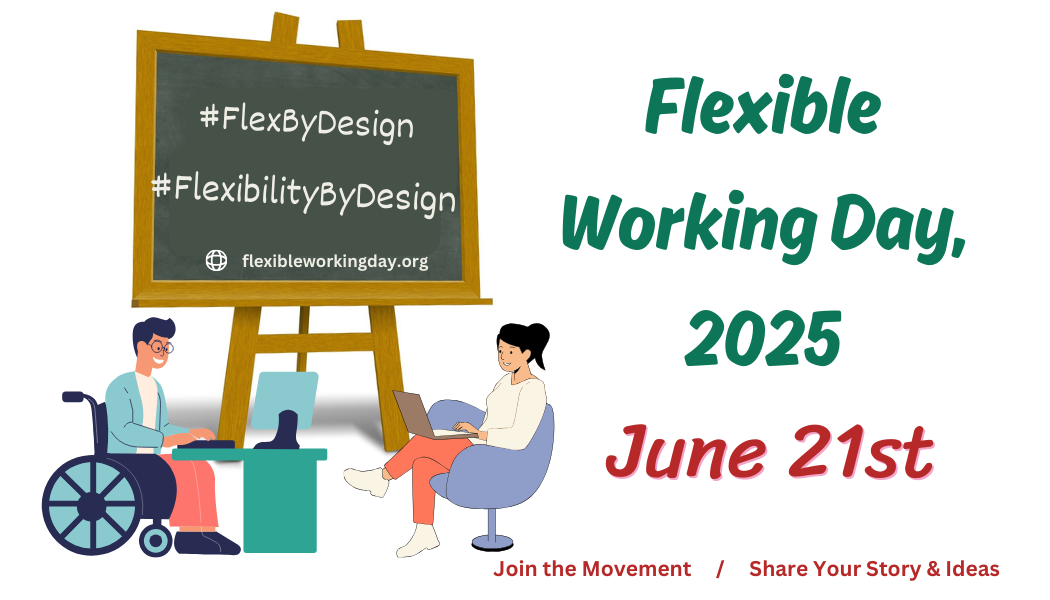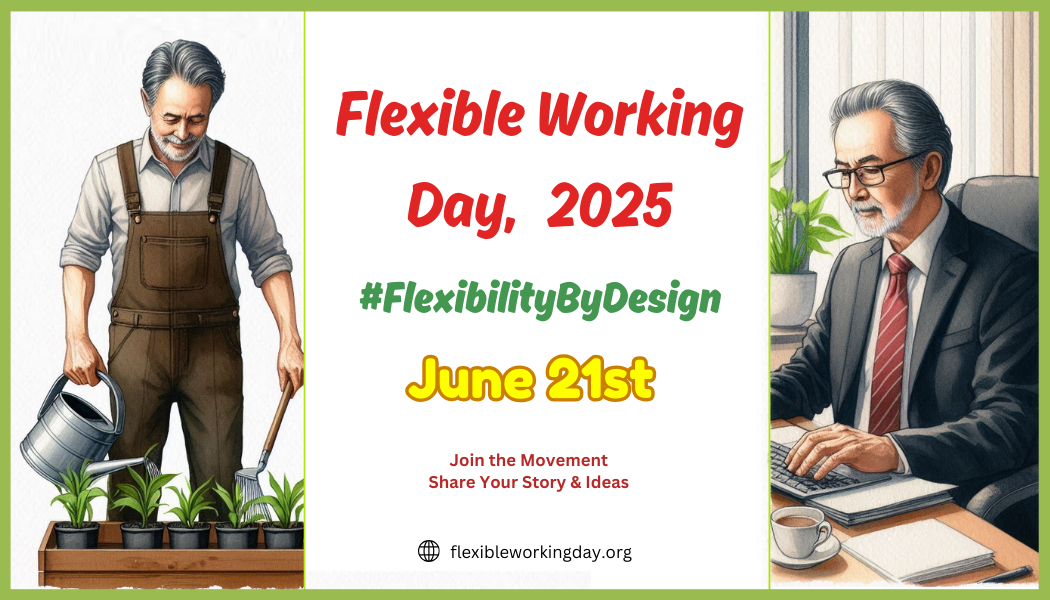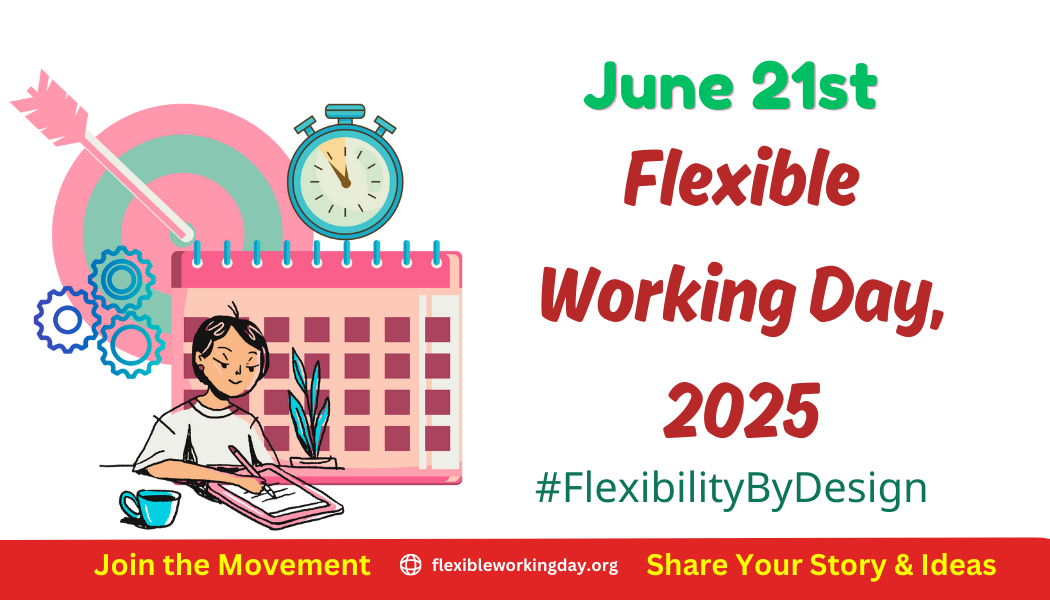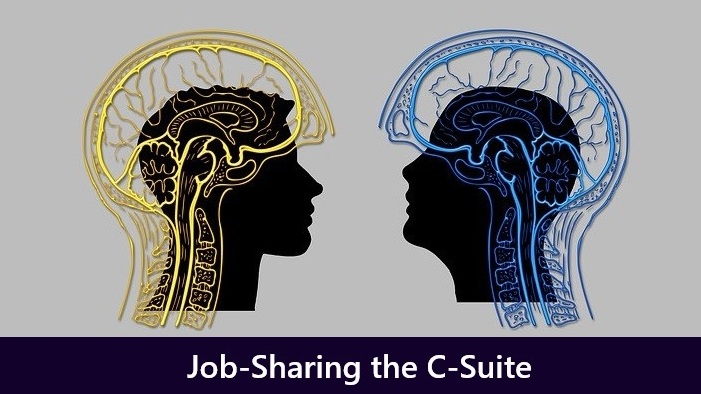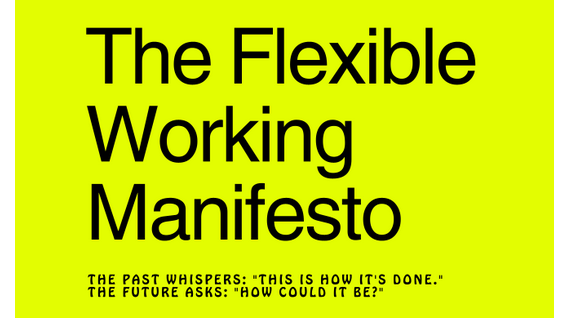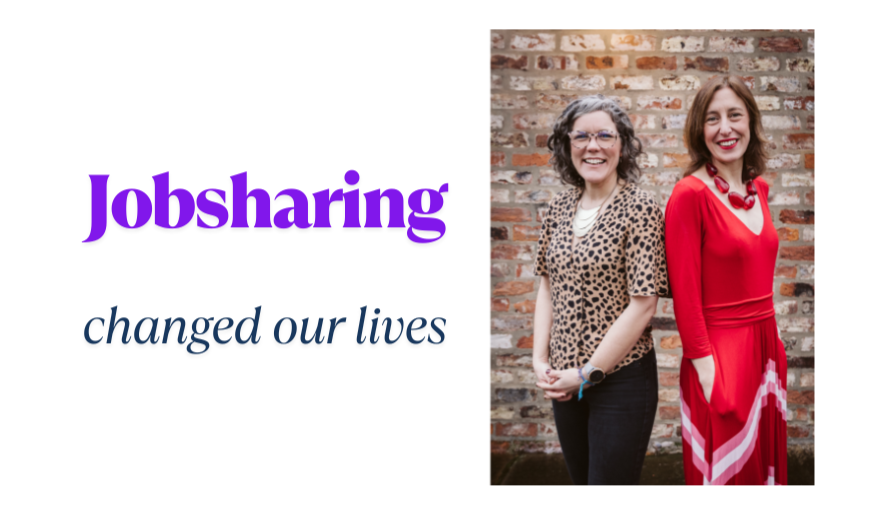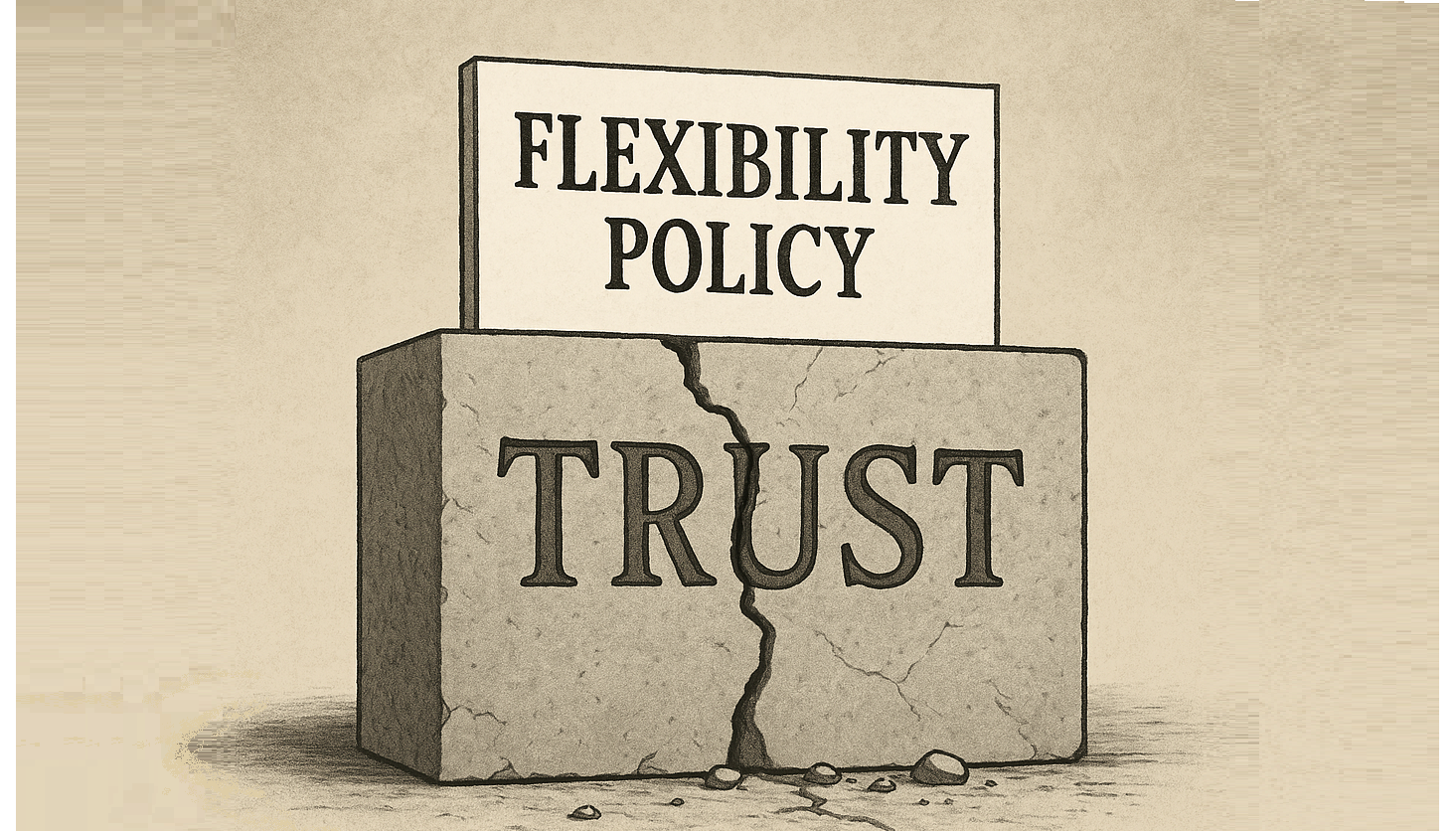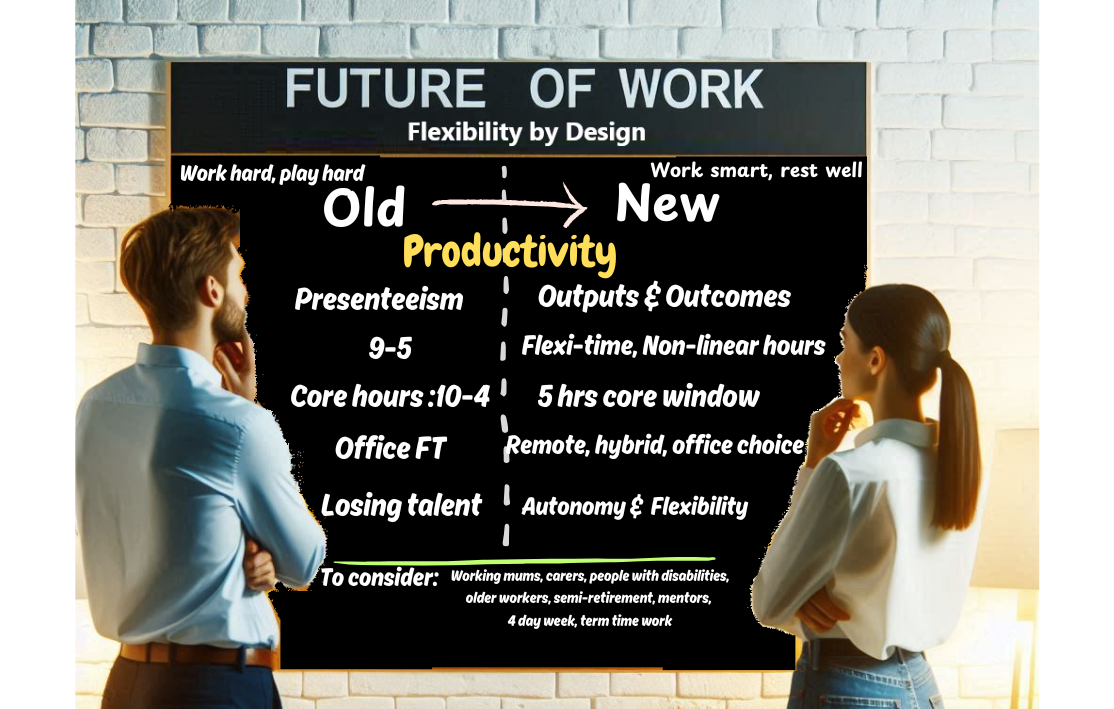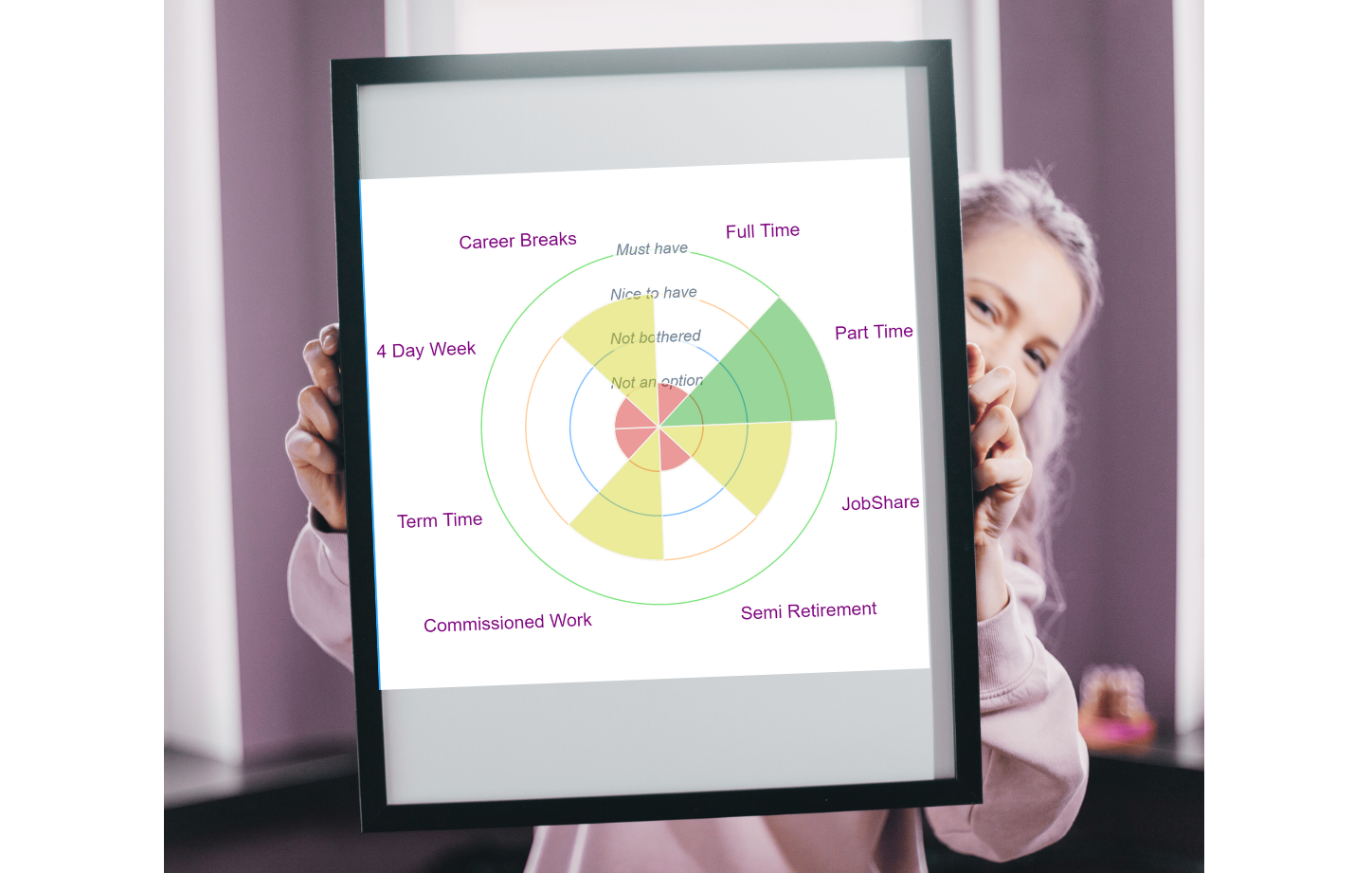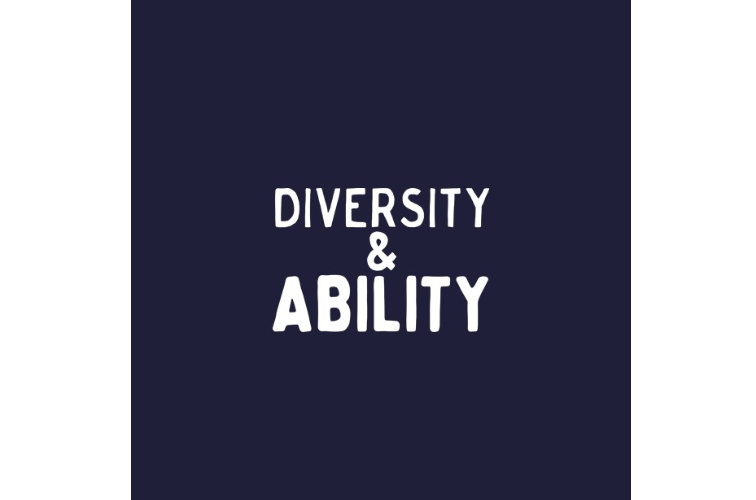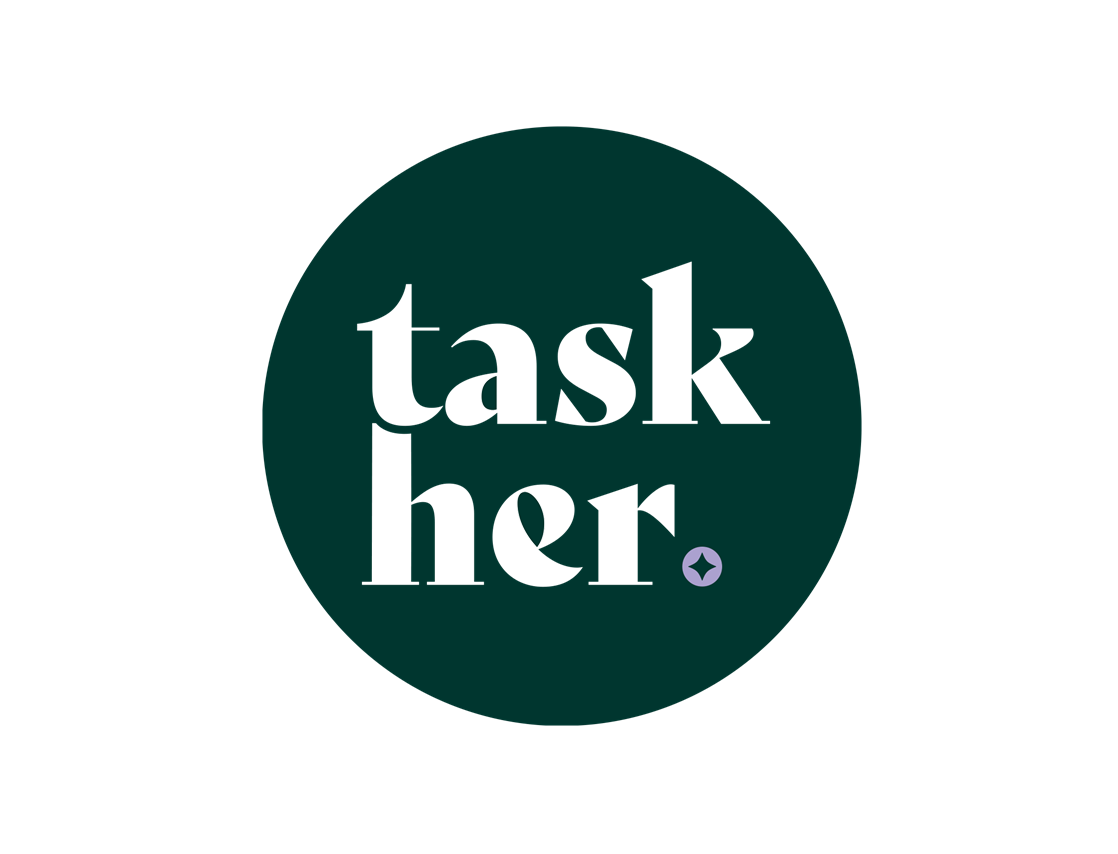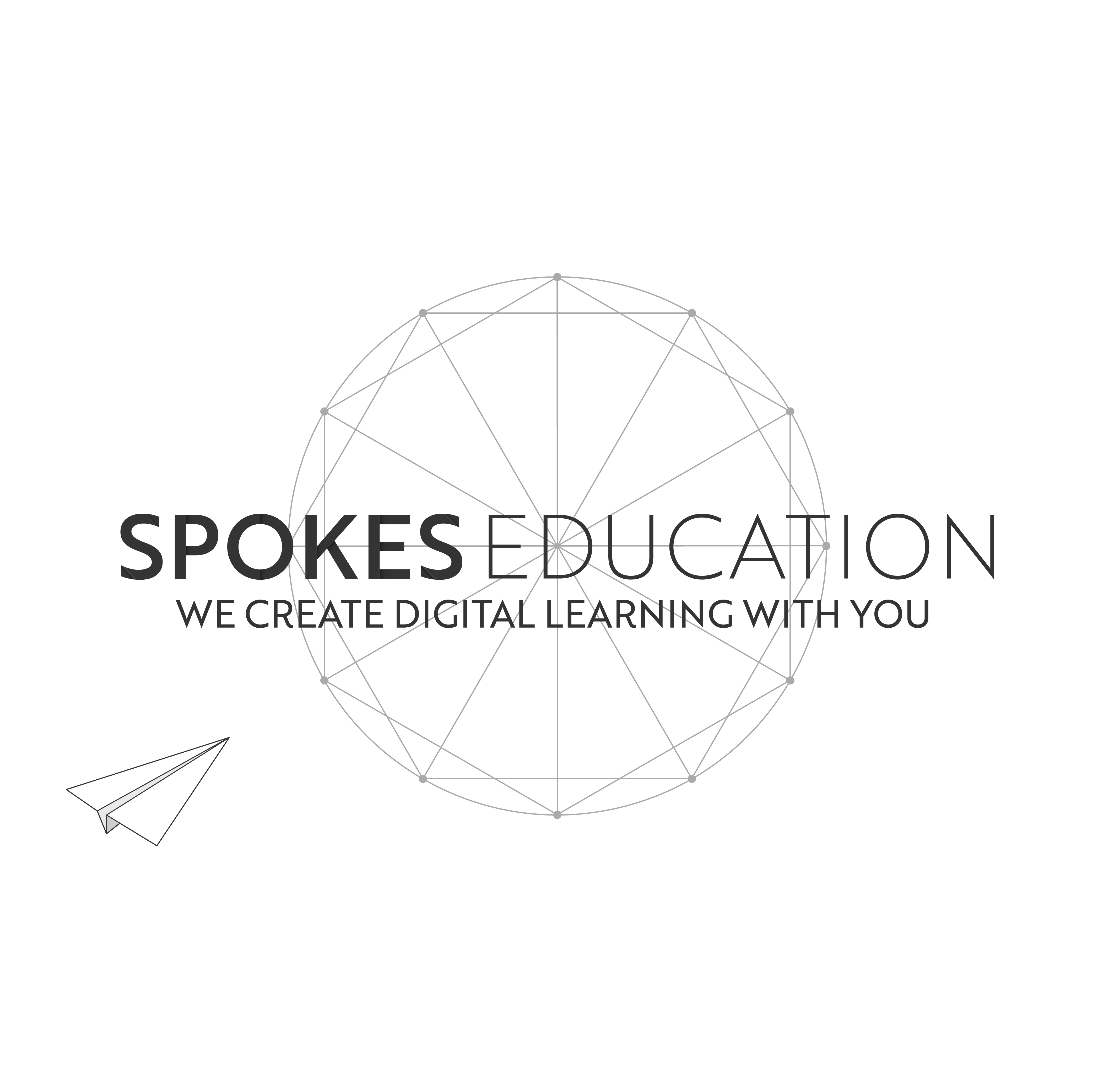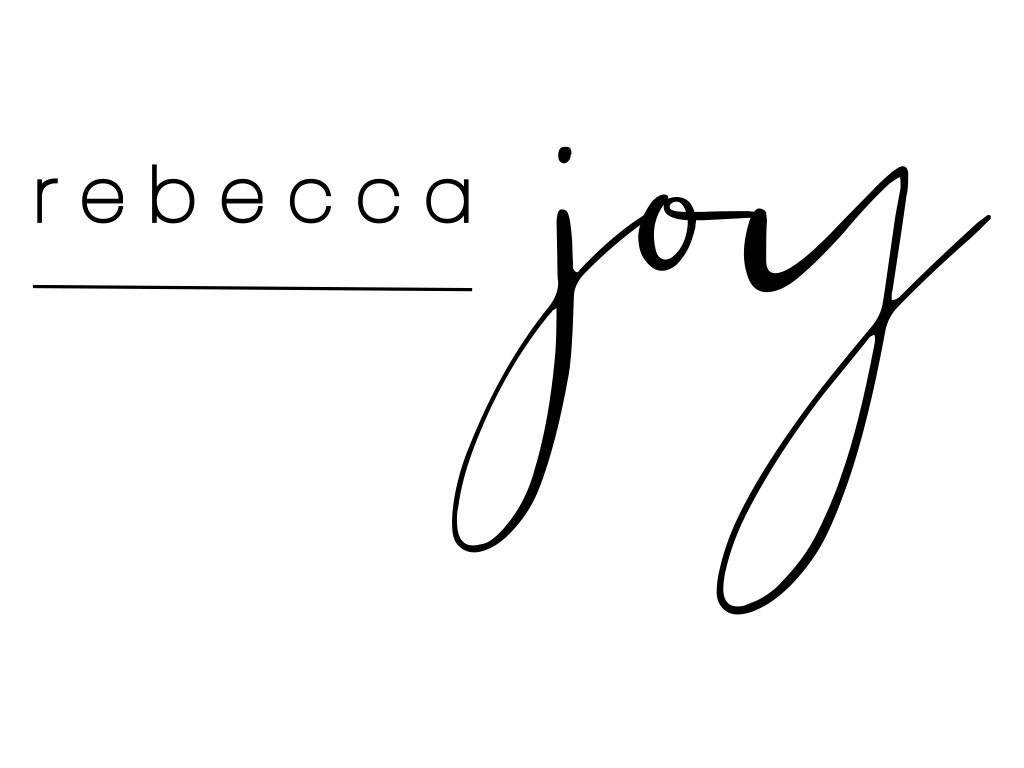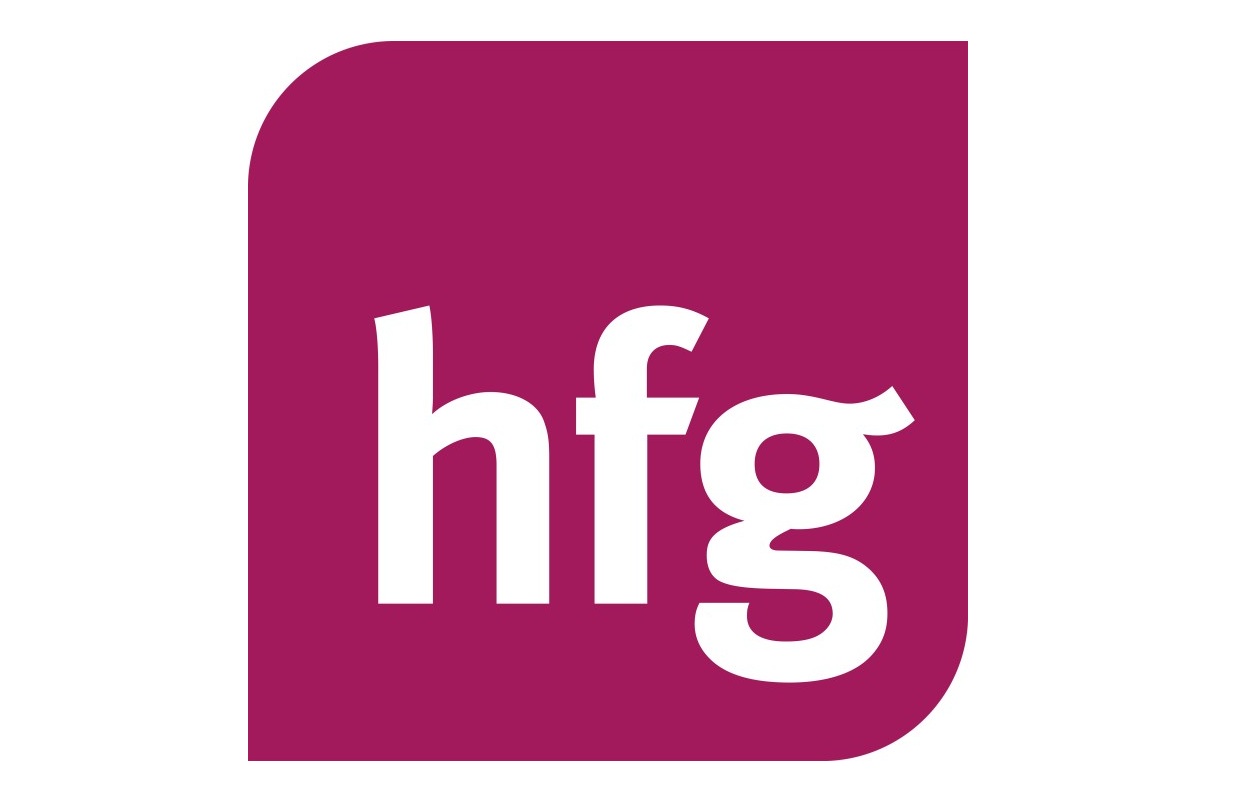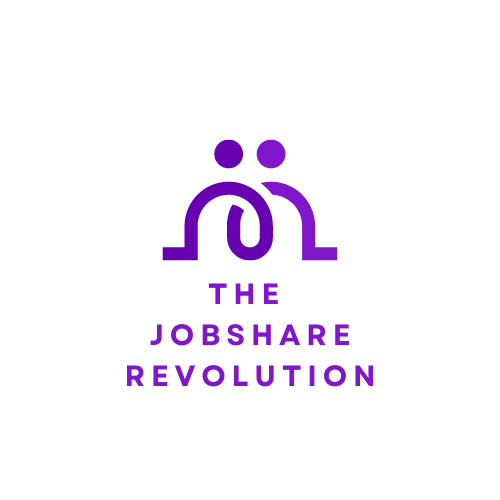FWD 2025 : Flexibility By Design
The Next Evolution of Work
For years, organisations have debated whether flexible working “works”, and after several years of real-world experience, we now have the data, insights, and lived experiences to move beyond outdated assumptions.
Rather than attempting to squeeze flexibility into old work models, it's time to redesign work itself with flexibility at its core. #FlexByDesign highlights this pivotal moment:
- We've seen what works (and what doesn't).
- We've identified the gaps in outdated workplace structures.
- We now have the chance to create intentional solutions that support both businesses and employees.
This isn't about forcing one-size-fits-all approaches. It's about rethinking how, where, and when work happens to optimise productivity, well-being, and business success.
The future of work isn't about returning to the past - it's about designing work that fits the future.
Map your flexible working profiles here.
Read the Flexible Working Manifesto
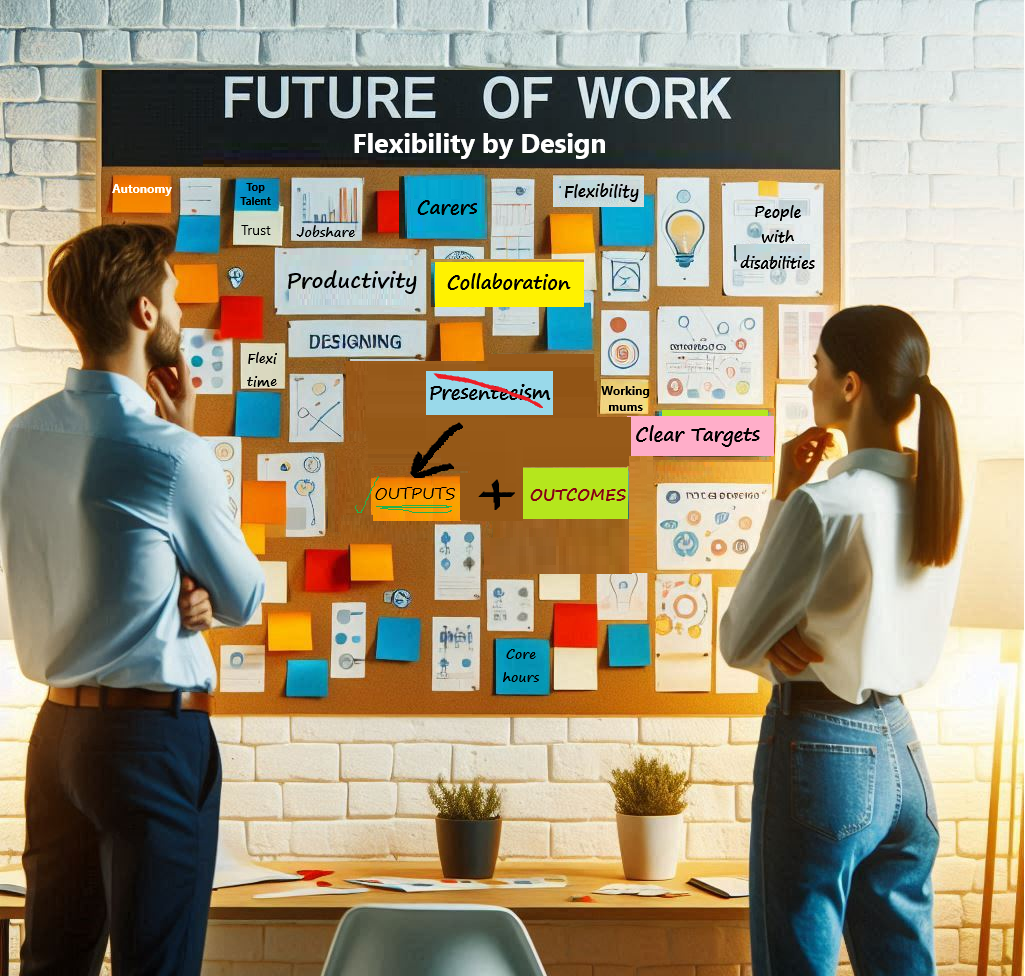
#FlexibilityByDesign
Celebrate Flexible Working Day with Our Free Resources
To help you promote and celebrate Flexible Working Day, we’ve prepared a collection of downloadable images. Feel free to use these visuals on social media, in newsletters, or anywhere else to spread the word about the benefits of flexible work arrangements. Download, share, and join the movement!.
The Flexibility By Design Collection
#FlexByDesign – Redefining Work for the Future
The way we work has evolved, but have our work structures evolved with it? Over the past few years, we've learned that flexible working isn't just about location or hours; it's about redesigning work itself to support different needs, roles, and industries. This year's Flexible Working Day theme, #FlexByDesign / #FlexibilityByDesign, is about taking what we've learned and moving beyond outdated work models to create a future where flexibility is built in, not just bolted on.
For years, the conversation around flexible working has been framed as a debate over whether it “works” or not. Today, after several years of lived experience, one thing is clear: it's not flexibility that doesn't work - it's outdated work models that don't support flexibility.
Too often, flexible work is judged through the lens of rigid, one-size-fits-all structures that were never designed to accommodate it. When these old systems struggle to adapt, flexibility is blamed for “not working”. Yet the reality is that work wasn't designed with flexibility in mind, it was designed in a long past era where a single income was sufficient and where extended families were the norm. Now is the ideal time to update this.
Now, with years of insight post-pandemic, we have an opportunity to move from temporary fixes to intentional, purpose-driven design. This means shifting away from arbitrary office mandates and outdated performance measures, and instead creating systems that focus on outputs, outcomes, trust, and adaptability. #FlexByDesign is about moving beyond trial and error. We have the data, insights, and experience to positively redesign work so that different forms of flexibility are not just accommodated, but optimised.
Instead of wasting valuable time and effort repeatedly debating remote work versus office mandates, let’s focus that energy on creating constructive, forward-thinking solutions that work for everyone.
Key Principles of #FlexByDesign
1. Flexibility in Flexibility
True flexibility isn't about replacing one rigid model with another; it's about ensuring different industries, roles, and individuals can find solutions that work for them. The best workplaces recognise that flexibility about flexibility is key - different roles require different approaches, and a tailored strategy will always be more effective than a one-size-fits-all model.
2. Outputs and Outcome-Focused Work Structures
Flexibility isn't just about where we work; it's about how work is structured to enable productivity, inclusion, and well-being. By focusing on outputs and outcomes rather than presenteeism, hours logged or locations, organisations can create systems that empower employees to thrive.
3. Technology and Mindset Shifts
With the right structures, tools, and policies, flexible work can drive productivity, engagement, and business success. Technology plays a critical role in enabling seamless collaboration, while mindset shifts are essential to building trust and adaptability.With an ever-increasing range of tools available we know a successful redesign is possible. Tools including: communication tools (email, instant messaging, video conferencing), project management tools (task lists, collaboration platforms), time management tools (time trackers, calendars), document sharing tools (cloud storage, version control systems), remote access tools (desktop sharing, VPNs), and virtual meeting platforms (Zoom, Teams, Skype) which enable employees to work effectively regardless of their location or schedule.
4. Tailored Flexibility with Tools Like MapMyFlex
Solutions like MapMyFlex help businesses move from vague flexibility policies to actionable, data-driven designs, ensuring flexibility is intentional, sustainable, and effective. By embracing tools like these, organisations can design flexibility that works not just for individuals, but for teams and businesses as a whole.The Future of Work: Designed for Flexibility
The future of work isn't about returning to the past—it's about redesigning work with flexibility built in from the start. It's time to stop making flexibility fit the old world and start creating a new world where flexibility thrives. By embracing #FlexByDesign, we can move beyond resistance and outdated debates, and instead build a future where flexibility isn't a compromise - it's a competitive advantage, and it's the norm.
Join the Movement
On June 21st, 2025, join us for Flexible Working Day and be part of the conversation. Share your stories, insights, ideas, and best practices using #FlexByDesign, and let's shape the future of work - by design, not by default.
Together, we can create workplaces that are not only flexible but also inclusive, productive, and future-ready.Read the Flexible Working Manifesto and let us know your thoughts.
About The Event
Flexible working day (FWD) is an annual awareness day created in 2023 to shine a light on the increasing importance flexible working has in our lives. For some it's a nice to have perk, whilst for many others it's a must have in order to remain in, or return to, the workforce.
FWD is a day to hold events where people and businesses can learn more about flexible working, why it’s important, how it can be achieved, who it benefits and how, the different types of flexible working, and the concept of individually tailored flexible working to meet the complex needs of people (for example care-givers and people with disabilities), the economic business case for flexible working and how it impacts the economy, and so much more.
Flexible working awareness day is an opportunity to educate ourselves and others about the benefits of flexible working, raise awareness of different types of flexible working arrangements, and encourage employers to implement flexible working policies. We encourage the day to be marked through a range of activities and events which could include workshops, seminars, webinars, and social media campaigns.
Why is this important?
Flexible working brings a wealth of benefits for both businesses and for people - from economic, to health and productivity.
Certain demographics are currently struggling to balance working life with their own unique life circumstances. For example 1 in 7 people of working age is a caregiver. According to CarersUK the peak age where people become caregivers is between the ages of 45-64 years when they are in the prime of their careers. Since this affects more women than men it impacts both their earning potential and the number of women in senior roles.
People for whom flexible working is a "must-have" include some people with disabilities, working parents (more often mums), care-givers, people with long term health issues, part-time students, and older workers including those who wish to semi-retire.
With the skills shortage and the over 50s exodus there is a highly skilled pool of talent who is economically inactive due to their need or desire for greater flexibility.
Artwork
2025 : #FlexibilityByDesign
Would you like to create artwork for Flexible Working Day?
Submit your artwork by email at flexi@flexpertae.com or contact us on our Linkedin page
The top artwork submissions will be displayed on this site along with a credit to the artist.
2023
To mark the inaugural Flexible Working Day, Raman Visuals created a new piece of artwork which depicts this work/life balance by showing a woman split between her personal life and her work life.
Balancing a baby in one hand and a laptop in the other.
In her personal life she is a parent raising her child, or is a care-giver for her elderly mum. Two ends of the caring spectrum when many people drop out of the workforce due to lack of work flexibility.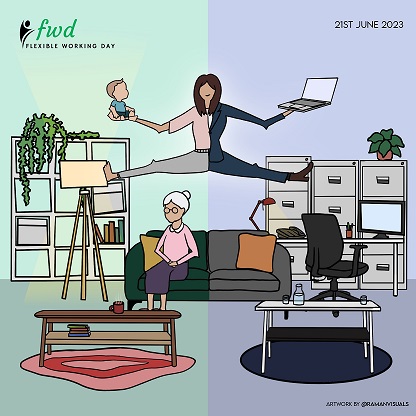
Get Involved
We encourage people and organisations to embrace this awareness day and use it as an opportunity to further the adoption of greater flexible working options. Trial this day as a individual-defined flexible day.
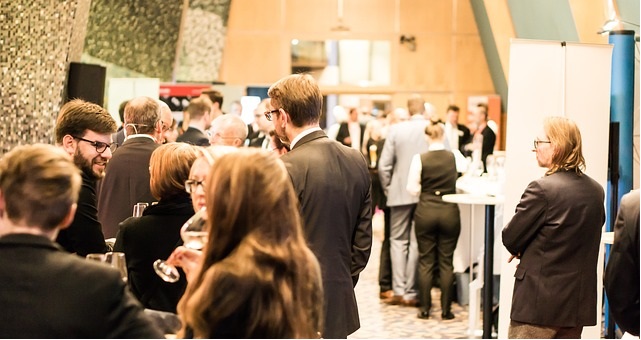
Celebrate the day at work
Seminars, webinars, or simply cake
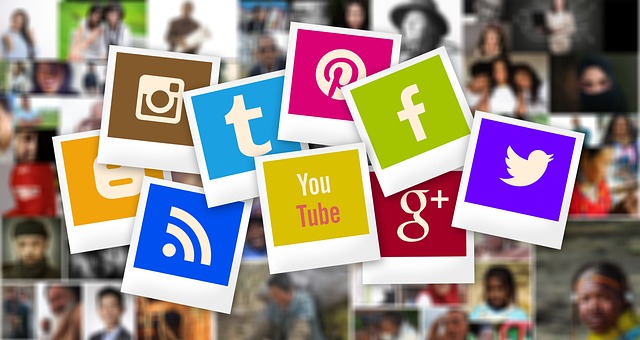
Social media Posts
Share your stories and thoughts

Learn
Which demographics require flexibility?
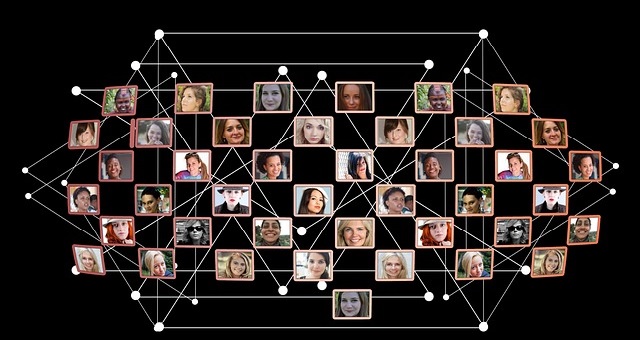
Hidden Talent Pools
Find new and hidden talent pools

DEI
Diversity, equity, inclusion and flexible working
Flexible Working Thoughts
What can an awareness day help cover?
Benefits of flexible working
Promote work-life balance
Support diversity & inclusion
Boost productivity
Reduce absenteeism
Reduce environmental impact
Spotlight hidden talent
Better mental health
Risks of little or no flexible working
Higher employee turnover
Lower productivity
Missed business opportunities
Brand reputation risk
Decreased innovation and creativity
Challenges attracting top talent
Poor diversity and inclusion
Ideas for talks and discussions
24 suggestions for topics you may find useful to discuss on the day.
Food for thought.
Flex-Ability
Beyond the tired remote vs RTO debate. Shifting the conversation towards designing systems that work for all types of flex.
Job Hunting
The mismatch between advertised flexibility and reality. Should job ads be more flex specific?
From presenteeism to outputs and outcomes
Updating measures of work for today's workplace reality.
Case study: Working mums
Experiences as a working mum.
Economic viewpoint
The economic business case, how does flexible working help the economy?
Case study: People with disabilities
What flexible working means for many people with disabilities.
Quotients
The flexibility quotient - IQ, EQ, CQ and now FQ
Technology
Technologies which support flexible working.
Employers
Progress to date and challenges to overcome wrt flexible working?
Case study: Care-givers
Balancing care-giving with work - can non-linear work days help?
Case study: flexibility and the older worker
The risks of losing tacit knowledge, skills and experience to a desire for better work/life balance.
Employees
How should you approach flexible working requests and what are your rights?
Job-seekers
Who are the most flexible employers and how can I find them?
Health
What are the health impacts from flexible working?
Industry
Which sectors are the most flexible and why? How can this be progressed in other sectors?
Flexible Options
More than remote working - a variety of flexible working approaches.
Culture
Work hard, play hard - at odds with flexibility?
Behaviour
Does flexible working impact your career prospects?
Myths
The committment perception
Culture
Outputs and outcomes vs presenteeism - can we move away from the latter?
Strategy
Jobshare: 2 brains for the price of 1
Academia
Flex and the academic
Womens careers
Would more flexible working options help address the gap in women in senior management?
Climate and sustainability
Is flexible working green?
Reading and Information
Some useful links on flexible working. We will be building out this section further over time.
Acas Code of Practice (UK) for flexible working
With the roll out of the new Flexible Working Bill in the UK, Acas has updated it's code of conduct.
Flexible working: a nice to have?
A blog post covering why flexible working is a necessity for certain people to remain in, or return to, the workforce.
Equitable Flexibility | 2024 Global Culture Report
A highly informative report with survey results, data, and a downloadable action guide.
F.A.Q
-
Is there a physical event you're organising?
There are currently no plans for a physical event. As the awareness day becomes more widely known and matures we will look to how this can be expanded out.
-
How does Flexible Working Day work?
We envisage the day to raise awareness of, and celebrate progress towards, flexible working in a similar approach to that adopted by International Women's Day.
Instead of one entity organising events, we encourage individuals and organisations to take inspiration from this years theme and hashtag, and use this day to shine a light on this key factor for the evolving future of work, and keep to the ethos of the day.
-
Will you be holding an online event?
We hope to arrange an online discussion. Updates will be provided as we learn more.
-
What does being a sponsor entail?
Currently being a sponsor means you support the flexible working cause and you support Flexible Working Day. It's a free-to-sponsor initiative. As we evolve there may be opportunities to expand the roles of sponsors who would like to do so.
Contact Us
Let us know if you'd like to be involved or be a sponsor.
Would you like to share your experiences, we're happy to share.

